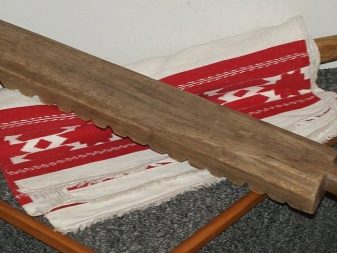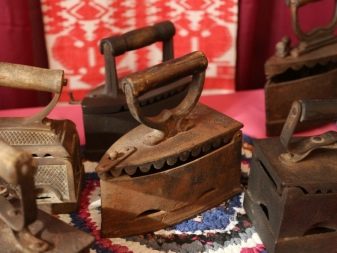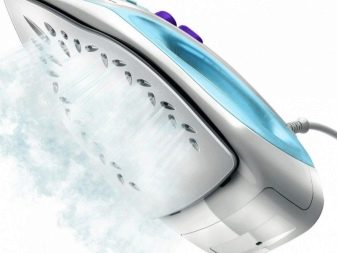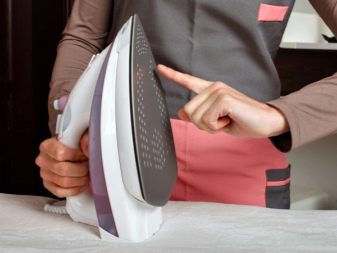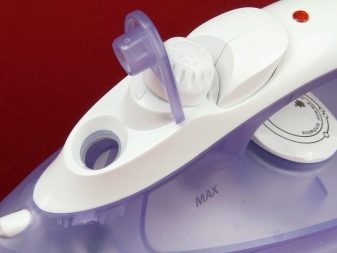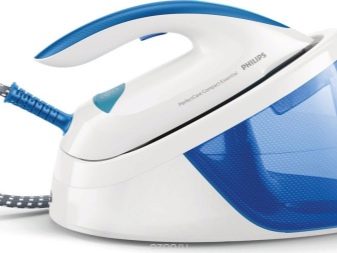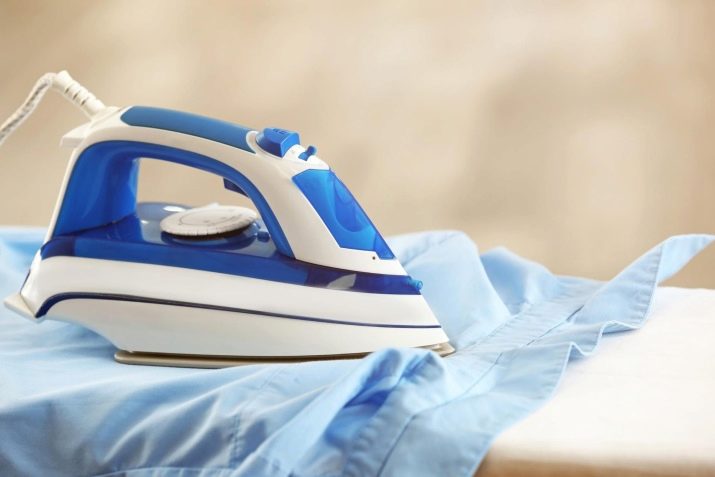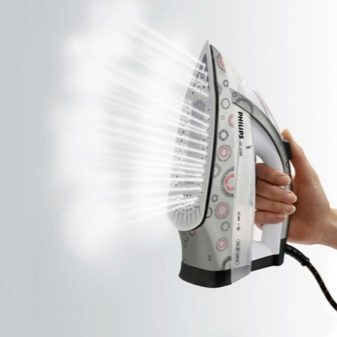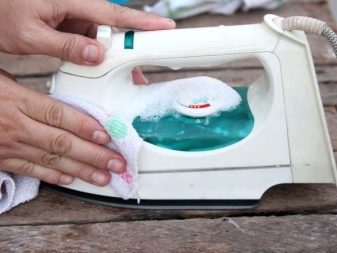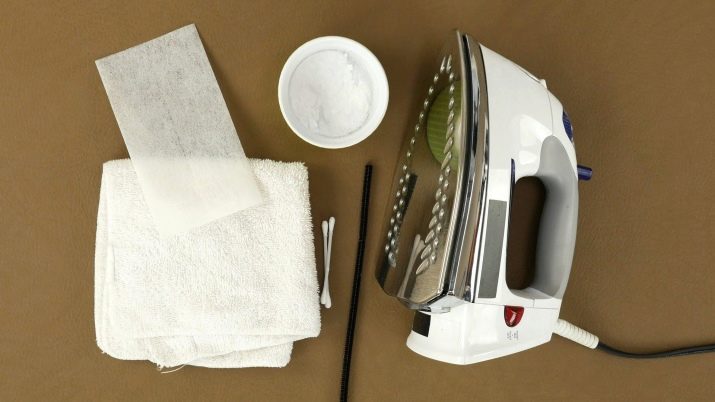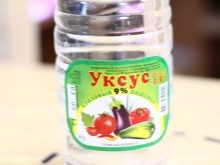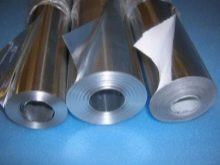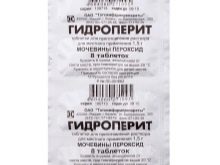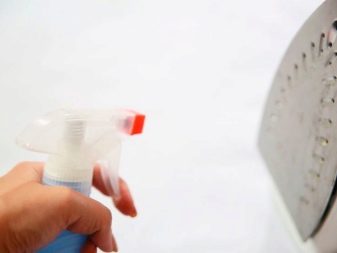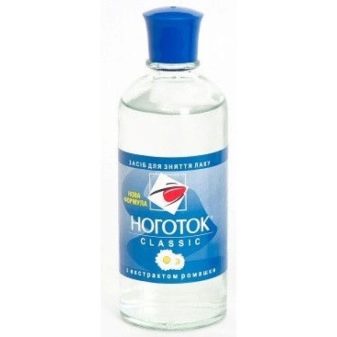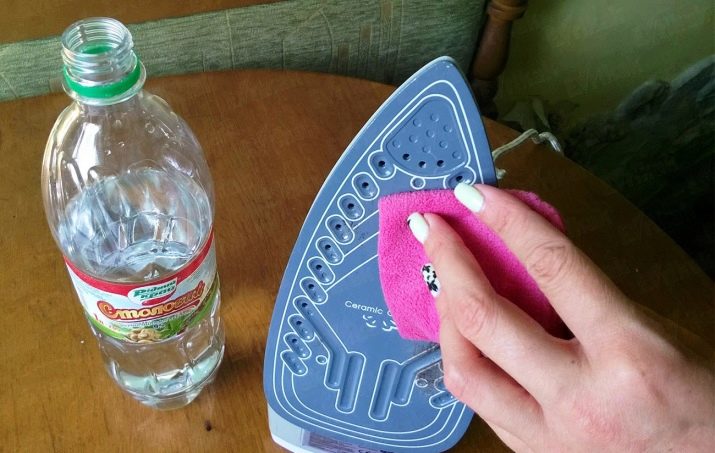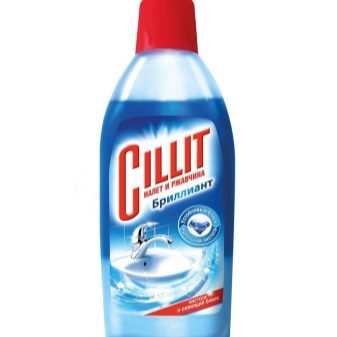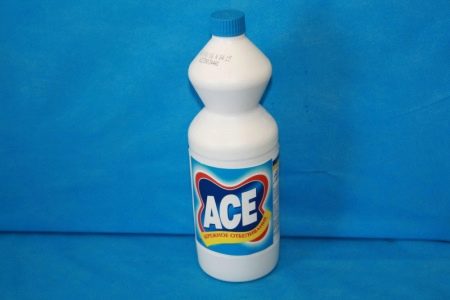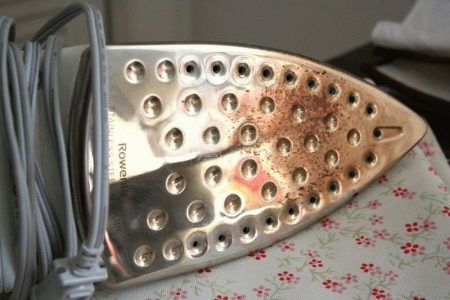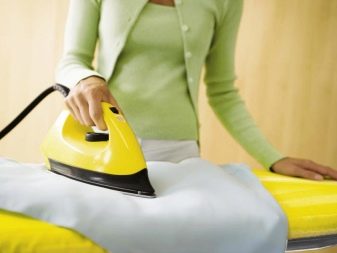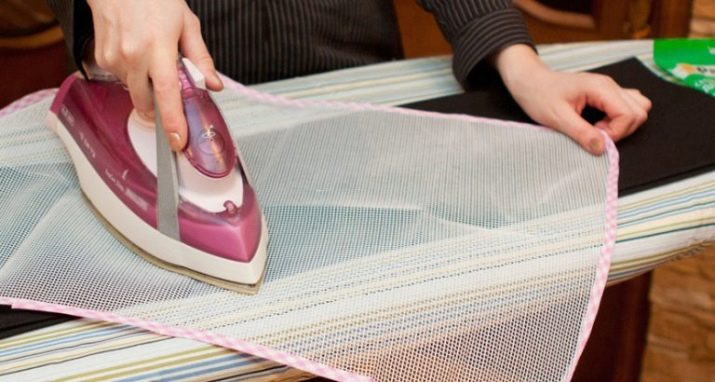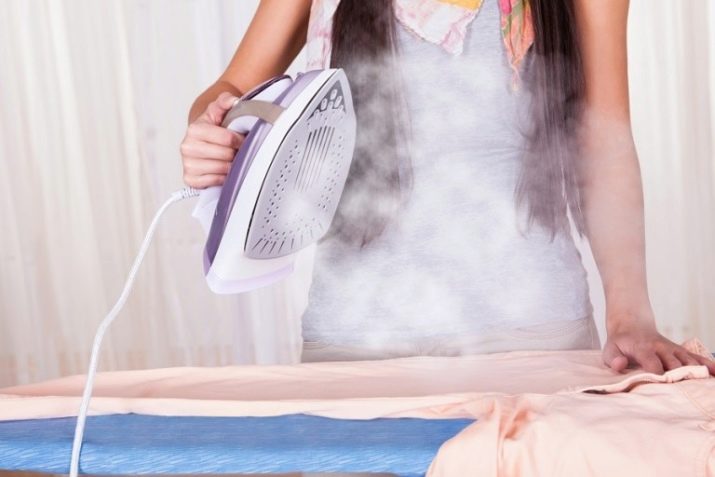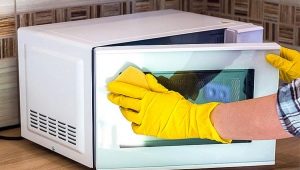How to clean the iron at home?
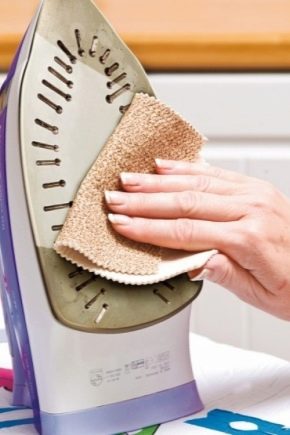
Iron - a necessary device in the household. Every woman uses it at least once a week, so its surface tends to quickly become dirty. Consider a few simple ways to clean your iron at home.
Features of the device
The iron was invented many years ago. People at all times wanted to look neat and stylish. Let even for smoothing folds on clothes used heavy heated cobblestones. The first similar tools appeared in the IV century in ancient Greece.
In Russia, for several centuries before the advent of the electric iron, special devices were used: a rolling pin and a ruble. Only in the era of the Troubles, the Poles and Lithuanians introduced into everyday use a device resembling today's iron.
An iron with burning coals inside appeared in homes by the middle of the 18th century. The most widespread heating iron, which the hostess put on an open fire or in a heated furnace for heating, and then stroked their clothes. Iron with a heating element was invented only in 1882. Today, the principle of operation of the iron and its design have changed slightly, but it is no longer made of cast iron, but a variety of modern and safe materials are used.
Kinds
There are several types of irons, depending on the purpose of use and the material from which their ironing surface is made. The type of cleaning you need to choose and which cleaning and detergents to use depends on which material is contaminated. Materials are of the following types:
- Household appliances with aluminum or stainless steel soles rather, they are already outdated, but they can still be found in some houses. Their ironing surface is more prone to the formation of soot. It can be cleaned by any means at hand, a fresh spot can even be carefully scraped with a knife. The metal surface is not scary, there will be no trace on it.
But in the case of an aluminum sole, it is strictly forbidden to use citric acid, since rust and dark spots on the ironing surface form under the action of acid. When ironing, clothing can be hopelessly spoiled.
- The most popular steam iron among hostesses is an iron having Teflon outsole with non-stick coating. It is easy to use and smooths the fabric. But such a sole requires regular care with the help of soft or liquid products (salt and abrasive cleaners for this type of surface will not work).
- Ceramic Irons more whimsical in care. Over time, their surface is prone to small cracks and scratches that make it harder to iron and even ruin clothes. Means for cleaning microwave ovens or ceramics are perfect for cleaning this type of electrical appliances.
- Modern irons are equipped with a special water tank., which under the action of high temperature turns into steam. With a strong stream of hot air, clothes are smoothed out much faster, but in this case clean drinking or distilled water should be poured into the iron. The surface with holes requires attention and regular maintenance.
- A separate type of iron - steamer. Usually it can be found in the studio or laundry, but now it is increasingly being bought for home use. It is more convenient and easy to use and maintain compared to an iron. Particular attention should be paid to the quality of water that is poured into a special compartment, it must be distilled. Some steamers are equipped with filters for cleaning, in this case, you can pour water from the tap, but do not forget to regularly change the filters.
How to use?
After buying the iron, carefully read the instructions attached to it. If you follow all the recommendations of the manufacturer, your household appliance will not need to be cleaned frequently or repaired.
If the iron "spits"
When using an old iron, you may encounter such a problem that it starts to produce water instead of steam. This is very unpleasant and will definitely lead to the damage of favorite things. Such a situation may occur if the device is used improperly or in the presence of faults. In the second case, the iron needs repair, and it should be taken to a service center.
According to the manufacturer’s instructions, water should be poured into a special tank before the device is plugged into an electrical network. The filling valve must be tightly closed to prevent water from spilling onto the laundry.
Water should be clean, not contain impurities harmful to metal and plastic. It is also necessary to wait for the device to fully heat up, the indicator light is designed for this.
Clothes sticks - what to do?
Sometimes the clothes may stick to the sole of the iron when ironing. Most often this stuff from synthetics. Such a burn can be avoided if you put wet gauze on clothes. In addition, the reason may be non-compliance with the temperature intervals when ironing different types of fabric, which are indicated on the labels.
Often, to save time, sometimes you have to iron a shirt and then a silk blouse without switching the heating mode, although you need to carefully study the labels and tags on each garment and turn on the appropriate temperature mode.
How to clean at home?
Modern irons are equipped with an automatic self-cleaning system. You need to carefully study the instructions and use this useful feature as needed. In order not to stain the floor or furniture, it is necessary to prepare in advance a basin and rags for the outflowing fluid. Usually self-purification includes the following steps:
- It is necessary to fill the tank with clean water.
- Heat the iron to maximum temperature.
- Turn off the instrument and press the self-cleaning button.
- After these actions, all the liquid must come out of the steam holes along with the dirt.
- To remove scale and dirt, shake the iron, then wipe the sole with a damp cloth.
After any cleaning, do not start ironing immediately, wait until the appliance cools down, and start working after a few hours.
As with any small household appliance, you need to take care of the iron daily. Every time after ironing, do not be lazy to wipe its heating surface with a clean cloth moistened with warm water. Then it will not be necessary to scour old contaminations for a long time, since they simply will not be.
Popular folk remedies
Despite the variety of types of pollution, experienced housewives have come up with many ways to deal with each of them with the help of available tools. There are several most popular methods:
- Salt You can only clean the iron with a metal surface. To do this, you will need a piece of cotton cloth or white paper and a tablespoon of common salt. It is necessary to heat the iron to the maximum temperature, turn off the steam supply. Then you should sprinkle the salt in an even layer on the cloth and gently move it along with no need to press the iron too hard. So the sole will be clean, and the salt will take away all the stains and darken.
- Soda even teflon irons are cleaned, as it has a soft structure and is completely soluble in water. There are at least 2 ways to scrub the sole of the iron with soda. The first is faster. You only need to wrap a handful of soda in cheesecloth and rub it with the heated ironing surface. For the second method, you will need a little more liquid detergent, it should be mixed with soda before the formation of a slurry. This gruel should rub the sole, leave for 30 minutes, then wipe with a cloth moistened with warm water.
- Toothpaste it is also possible to cope with minor pollution. It is necessary to spread the paste on the ironing surface of the device, then rub it with a damp, rough cloth, rinse off the formed foam with water and wipe dry.
- Vinegar - an indispensable tool for cleaning various items in the house, including iron. You just need to wipe the hot sole with a small cloth dampened with vinegar. If the dirt is old and did not immediately go away, then you can leave the cooled iron on this rag for 8-10 hours. After that, it remains only to wipe the sole with a damp cloth.
- On the shelves of hardware stores you can see a wide variety. special pencils. The sequence of actions is the same for everyone: you need to smear the heated iron base with such a pencil in such a pencil, it will melt, removing pollution. Then it will be necessary to wipe the sole with a damp cloth.
- It is possible to clean a deposit from an ironing surface ordinary foil. The thicker it is, the better. You just need to iron the sheet of foil with a heated iron, sticky pieces of fabric will remain on the foil.
- Hydrogen peroxide and ammonia Teflon-coated iron can also be quickly cleaned. It is necessary to wipe the cold ironing surface with a cotton pad, which is abundantly moistened with one of these products. If the method did not work immediately, you need to heat the iron and repeat the procedure.
- Gidroperit. It is necessary to warm up the iron and move the tablet along the sole. The pollution will peel off along with the tablet; all that remains is to wipe the device with a damp cloth. It should be noted that this process should occur with an open window and always in protective gloves, since harmful ammonia fumes are released.
Please note that many cleaning products are toxic, you must follow safety precautions when using them.
Protect your skin and respiratory organs from their harmful effects and do not forget to open the windows when there are unpleasant odors.
Saving from burnt cloth
A big problem in the daily use of an iron is associated with sticking pieces of cloth on the ironing surface. In order to clean off a similar carbon, you need to moisten any rough fabric with acetone and carefully wipe the base. The ceramic surface can be easily cleaned with a wooden spatula or scraper. The heated sole needs to be lightly scraped and then wiped with a damp cloth.
Another common problem is the adhesion of polyethylene. Help in this case can also liquid for washing the varnish. The heated base should be wiped with a copiously moistened cotton swab, when the iron has cooled, wash off the acetone and get rid of the specific odor with a wet wipe.
How can I clean inside?
Inside suffers most often a water tank. The reason for this - the dirty water that the hostess poured into the tank to create steam. Although in some models of irons there is a counter-limestone rod, scale and limescale may still appear. Lemon juice or sparkling water are excellent helpers in the fight against this problem.
To clean the iron tank, a glass of hot solution from 25 g of citric acid and water must be poured into the filling opening. It is necessary to warm up the iron as much as possible and, holding the device above the bath or basin, turn on the steam mode several times. Along with the liquid, flakes of lime will come out of the holes.After that, it will remain to flush the tank and wipe the sole with clean water.
Sparkling water, as in the previous method, should be poured into the hole and heat the iron. Acids and alkalis contained in soda, will help dissolve old scale.
Particularly noteworthy useful holes on the basis of the iron, which are used to supply steam. To clean them you will need a few cotton swabs and a solution of vinegar and salt.
One side of the stick, which is soaked in the resulting solution, you need to thoroughly clean the holes, then with the other dry end remove all remaining dirt and mortar.
Another effective way is from the inside. Distilled water with vinegar should be poured into the water tank. Turn on the iron and wait until it heats up, then turn on steam mode and iron any towel for 10 minutes. After such actions, the holes will be clean again.
Rust-free surface
Rust on the ironing surface of the iron can occur for two reasons:
- high iron content in the water used;
- frequent contact of the base with metal fittings (on jeans or jackets).
To quickly get rid of rust, you need to heat the iron, then turn it upside down with the sole and drop a few drops of Silit into the holes for steam. After some time, rust will come to the surface. Wipe it with a dry cloth. After the procedure, wipe the ironing surface with a cloth moistened with clean warm water.
How to clean mold and other contaminants?
During prolonged use, the iron can become dirty not only outside but also inside. Top of the dirt enough to regularly wipe it with a damp cloth, or if necessary using detergent.
In addition to the limescale, a greenish mold is sometimes formed in the water tank, especially if you always keep the filling valve tightly closed. At the initial stages of infection will help bleach, it must be diluted with water at a ratio of 1:10, pour into the tank and leave for an hour. Then warm up the iron and repeatedly press the steam button. The mildew flakes must go through the holes along with the steam. Rinse the tank and the sole of the iron with clean water.
If you do not take care of the appliance for a long time, a thick sheet of soot forms on the sole. You can get rid of blacks with the help of a hot “bath”. It is necessary to put an iron in a baking sheet and pour hot water with any detergent to the level of the sole. Leave the device for a while. If the soot has not moved, then the baking sheet is additionally heated.
Useful tips
Cleaning the iron at home inside and outside is not so difficult; there are many ways to do this. It is much more useful to know and constantly use measures to prevent the formation of soot and lime scale.
What you need to do before using:
- carefully study the instructions for the device and the labels on the clothes you are going to iron;
- prepare a flat, soft surface for ironing;
- before plugging in, pour clean drinking or distilled water into the tank.
During use:
- iron through wet gauze;
- observe temperature conditions for each type of fabric.
After use:
- disconnect the device from the mains;
- let it cool completely by placing the iron with the sole facing up;
- drain the remaining water;
- wipe the cooled sole with a damp cloth.
By following these simple tips on caring for an iron, you will contribute to the fact that it will serve you for many years and will not need to be repaired frequently. In addition, you will always enjoy its neat appearance.
How to effectively clean the iron at home, see the video below.

